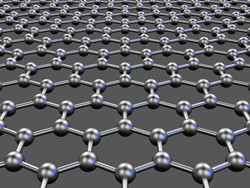Study on graphene microscopic mechanisms
Graphene is one of the most exciting materials of the 21st century. In particular, bi-layer and multi-layer graphene hold great promise for nano-scale electronics and photonics, as an external electric field between layers can introduce a band gap. Besides these bizarre transport properties, such systems also present interesting phonon anomalies. Graphene transport and electronic properties are largely determined by the strength and nature of the electron–lattice interaction and by the lattice dynamics. The EU-funded project 'Quantum interference and electro-phonon anomalies in graphenes' (QUANTUMPHANOGRAPHENE) significantly contributed to identifying the microscopic mechanisms controlling the infrared phonon activity in graphene-based materials and its effect on optical conductivity. Analysis of phonon anomalies revealed in a direct way the mechanisms governing the properties of the electron–lattice interaction, giving rise to an asymmetric phonon line-shape. The project investigated the presence of such line-shapes, known as Fano asymmetries, which provide a direct probe of the particle–hole excitations coupled with the electron–phonon interaction. Fano asymmetry as well as phonon peak intensity strongly relied on the external gate voltage. Furthermore, comparisons with experimental measurements shed light on the different inter-band excitations involved in the different probes. Quantitative analysis of optical phonon spectral properties proved a powerful tool to characterise the electronic properties of multi-layer graphene materials. Such properties include layer number, stacking order, band gap presence, intrinsic doping level and controlled doping by field effects. Based on its progress, the project also focused on determining the physical properties of other 2D dichalcogenide materials that present similar properties to graphene. Work was geared toward investigating their electronic, screening, superconducting and electro-elastic properties. With precise control of its electronic and transport properties, graphene becomes a remarkably flexible tool for nano-scale electronic devices. Project findings resulted in three publications in scientific journals.







